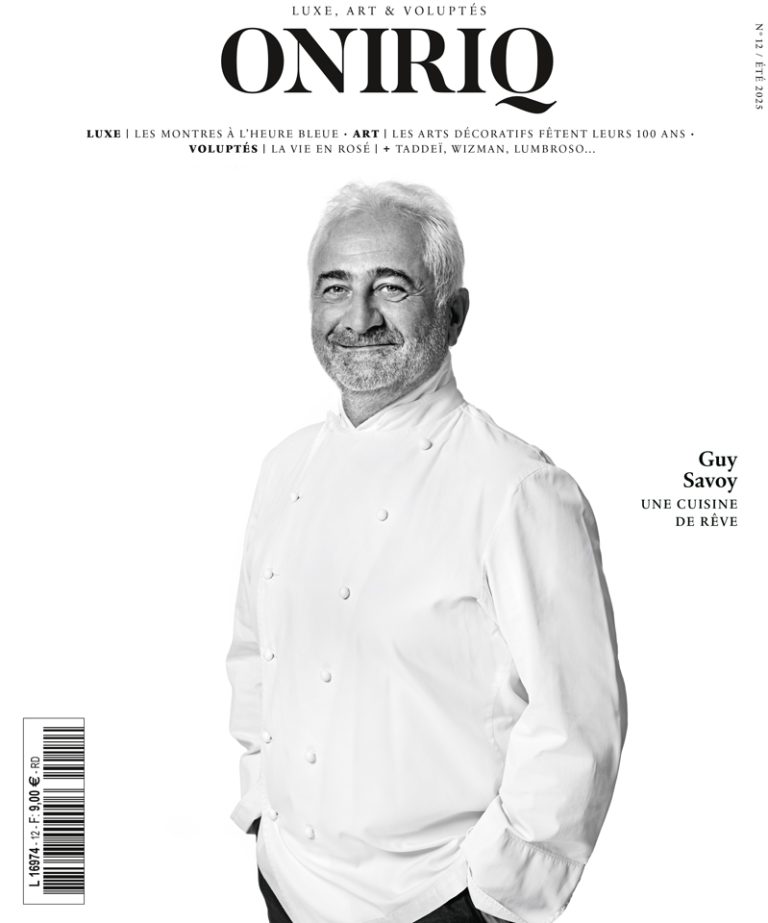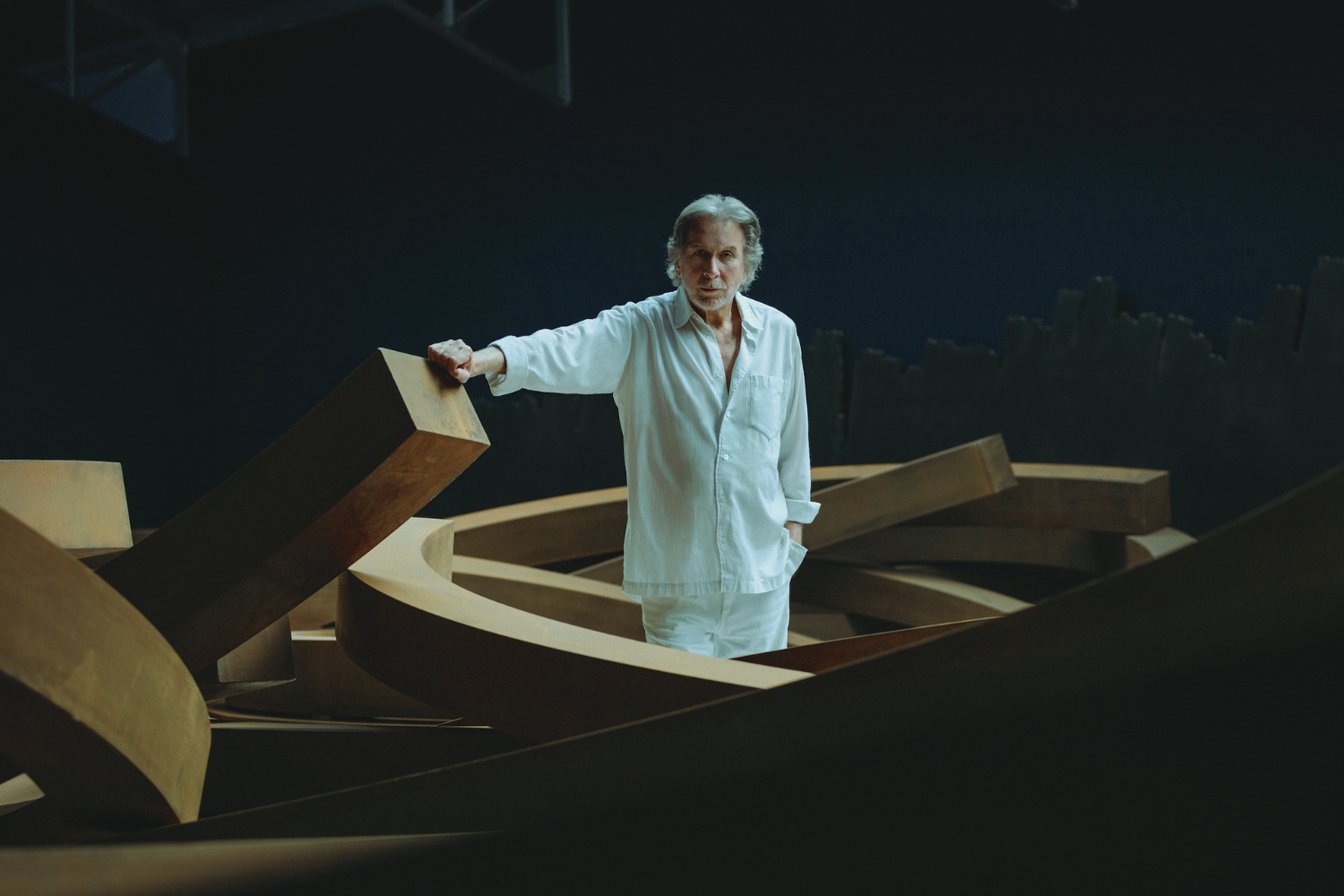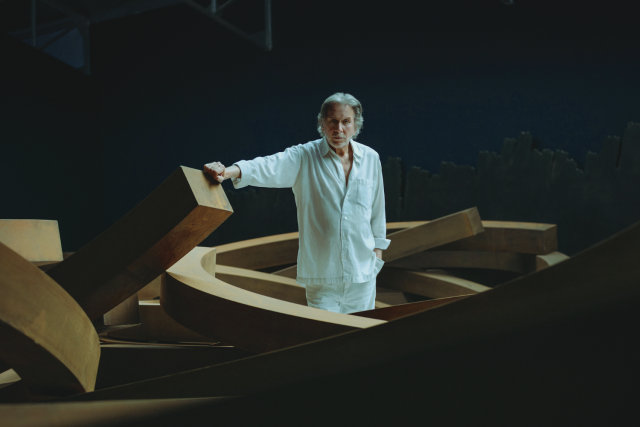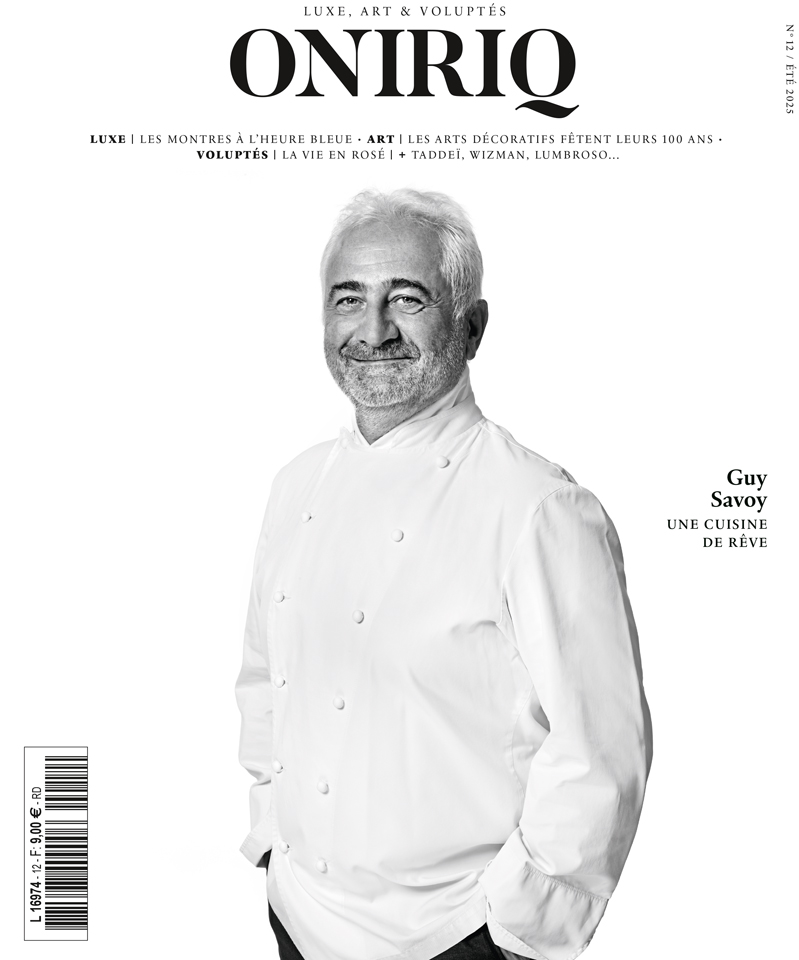Translated by Bethszabee Garner
His monumental curved steel sculptures are exhibited all over the world. Bernar Venet, one of the most important contemporary artists, renowned internationally, welcomed us for a meeting at his foundation in Le Muy (Var).
Désirée de Lamarzelle: How does one decide to become an artist?
Bernar Venet: Sometimes you don't have a choice. As a child, I was a student like any other: neither the best nor the worst, but discreet. I came from an extremely poor working-class family. I'm not being pessimistic; I'm telling you this to better explain the context of my first steps in art. That of a boy without any particular rough edges, even somewhat hung-up, who one day discovers in his teacher's eyes amazement and admiration for his drawings. It was a revelation: I could get noticed in a field that fascinated me because I was already drawing all the time.
Désirée de Lamarzelle: You put all your energy into it...
B.V.: Around the age of 11, I was painting flowers, seascapes, and mountains until that very specific day when my mother took me to Digne to buy oil paints. The turning point came in the shop, where I was captivated by a book with an illustration of a painting. When I asked who it was by, and was told “Renoir,” I heard that name for the first time. My world was limited to that of a family who went to work in a factory every day. I was destined to become a factory worker myself, and it was then that I saw the possibility of another world. So yes, from that moment on, I put all my energy into painting. Of course, it's not enough to have talent, to know how to draw or paint. It's the creative spirit that counts most. I wasn't attracted by the quality of the painting, but by the creative force that emanated from paintings like those of Picasso (his blue period), Cézanne, and Matisse. I was fascinated by their composition. Not to mention my discovery of abstraction with Paul Klee.
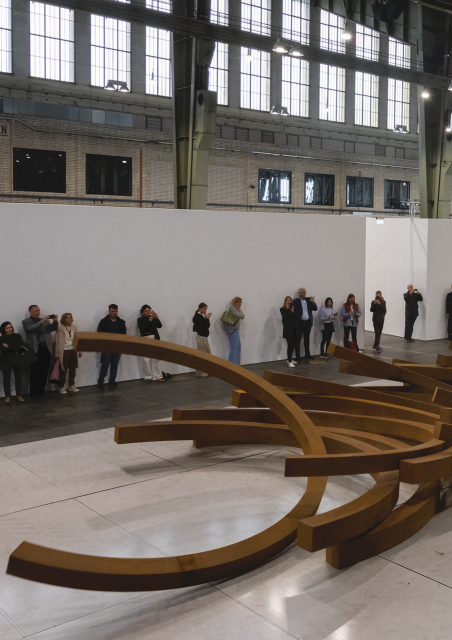
Désirée de Lamarzelle: Until you turned to conceptual art, of which you are considered one of the pioneers.
B.V.: During my military service, when I discovered a tar flow on a cliff, I felt the need to inhabit art differently, to break with the traditional form of painting: all-black paintings with tar. It was in my nature, I loved black, I had to go for it. And then it becomes a whole other discourse, like a form of absolute radicalism that aims to deconstruct everything we already know about the artistic gesture: to express nothing, to mean nothing, but to do. It's the idea of pouring coal out any old way, without any predefined order or preconceived outline, which is more important than the result itself.
Désirée de Lamarzelle: Was that the moment when you decided to be more radical?
B.V.: We don't say we want to be more radical, we are by nature. But above all, we feel dissatisfied. It's a constant feeling that drives us to create again and again. We have to go for it, and time is running out. I only have twenty-five years left to work, you understand.
Désirée de Lamarzelle: Why did the very young artist that you were decide to leave France?
B.V.: I left for the United States because of the context. You have to go back to 1961, which marked the advent of pop art with what was known in Paris as “narrative figuration,” a movement of artists among whom I had many friends but which was at odds with my abstract work. In France, no one looked at my paintings and no gallery wanted to exhibit them. Thanks to my friend Arman, who paid for my ticket and took me in, I was able to go to New York and discover the avant-garde artists of minimal art. Their geometric, abstract, industrial works were a revelation to me: everything corresponded to my ideas. I had every reason to stick with it and go and meet those who were part of my family.
Désirée de Lamarzelle: Despite your international fame, you were not well known in France. Would you say you were ostracised by galleries?
B.V.: There has always been a disconnect with France. In New York, things happened very quickly because after two years I was exhibiting with some very big gallery owners: Leo Castelli, Virginia Dwan and Paula Cooper. In 1971, I was unknown in France, even though the New York Cultural Center was organizing a retrospective of my work and I was only 30 years old. My notoriety was almost suspicious to the French art world. And maybe I wasn't trying to seduce people into getting to know me either. Today, people are very familiar with my sculptures, but less so with my work as a whole. In fact, they don't even know my name or what I look like (laughs). But that's fine. I just want my works to remain and contribute to the vision of art today.
Désirée de Lamarzelle: You are indeed, often presented as the artist who makes steel sculptures.
B.V.: People call me a sculptor, but in reality I'm not, because I define myself as an artist with a conceptual matrix that allows me to express myself through different disciplines. In other words, the same content, the same idea, the same concept can be conveyed through painting, sculpture, poetry, video, music, and performance. It is a way of thinking that has materialized over sixty years of work, which includes evolutions and questioning of the artistic process.
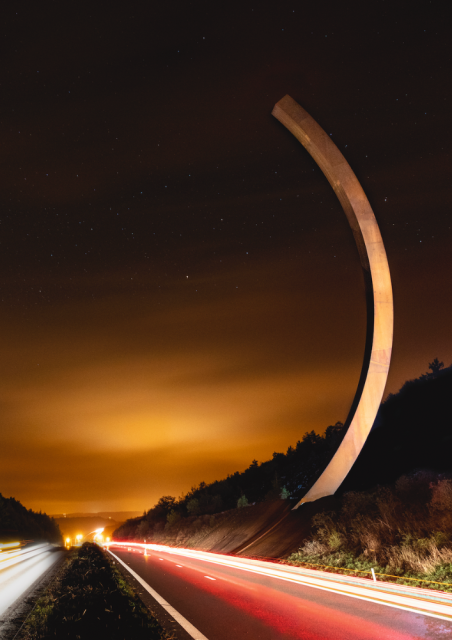
Désirée de Lamarzelle: How would you define the creative process in your work?
B.V.: The starting point is usually a simple idea that I don't yet have a final purpose for, but where chance can lead me to a solution that is much more interesting than the original idea. This is what I call “the accident”: the disorderly fall of metal bars perfectly aligned on the wall, leaving gravity and chance to decide the arrangement of these elements. It is my eye, like an intuition, that tells me if it is a good idea.
Désirée de Lamarzelle: Many of your sculptures are exhibited outdoors. Would you say they are in confrontation with nature?
B.V.: I'm often asked that question. I never think about this relationship with space. I don't do land art. I simply try to see how I can create something using my vocabulary as a visual artist. Space is sculpture in itself. It's true that I prefer indoor sculpture because the space is more neutral and not distracted by what we see as nature. But when I do an outdoor installation, I still prefer it to be in harmony with nature. Whether it's the Palace of Versailles, where the sculpture served as a frame for the palace, or a commission in Saudi Arabia, where I'm going to work from photographs, I want everything to fit together. But my creative process is mainly to go to my factory thinking only about doing something interesting. My only motivation is to work while thinking.
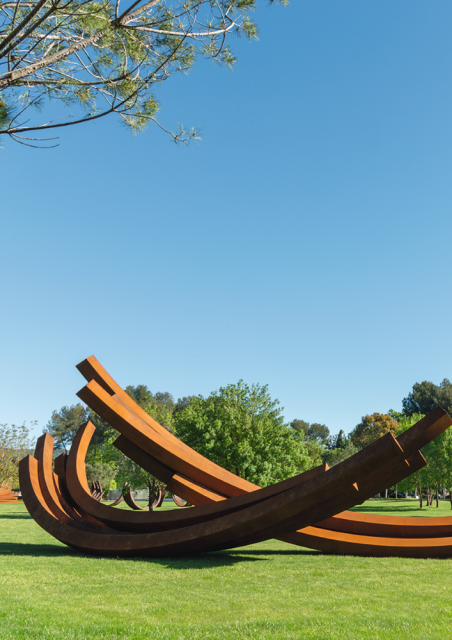
Désirée de Lamarzelle: Is the sometimes excessive logistics of your installations as much a part of the work as the result?
B.V.: Regarding the steel sculpture Arc majeur, which I designed in 1985, its installation thirty years later on the Belgian E411 motorway is the highest in Europe. It consists of 200 tons of steel spread over 75 meters in diameter, which were transported on nine trucks and assembled on site using two cranes. But even in this form of excess, the solution to achieve it is not part of the work for me. It's just interesting. Unlike Christo, for whom the content that precedes the creation of the work is very important because it is part of a whole.
Désirée de Lamarzelle: Why did you create a foundation during your lifetime?
B.V.: When museums started wanting to visit the collection of sculptures I had installed in my park, I realized how important it was to preserve my work, but also my collection of artists who are dear to me, such as Franck Stall, Dan Flavin, Robert Motherwell, Carl Andre, Richard Long, James Turrell, Donald Judd, and Sol LeWitt. Through the foundation, it's also a journey that bears witness to the renown of minimalist and conceptual contemporary art, because I would go so far as to say that there is no one in my park who won't be in the history of art in 200 years. For me, that's a big responsibility towards the public. When I see very prestigious galleries exhibiting very commercial artists, it makes me furious.
Désirée de Lamarzelle: What makes a good gallery owner in your opinion?
B.V.: I'd like to answer nostalgically that it's the committed gallery owners of the 1960s in New York, like Paula Cooper and Leo Castelli. They had an idea, a taste, and they defended a new, radical aesthetic. They only talked about art. There was no question of exhibiting artists they believed in less but who brought in cash to pay the rent.
Article written by Désirée de Lamarzelle to be found in issue n°2 of OniriQ Magazine.

